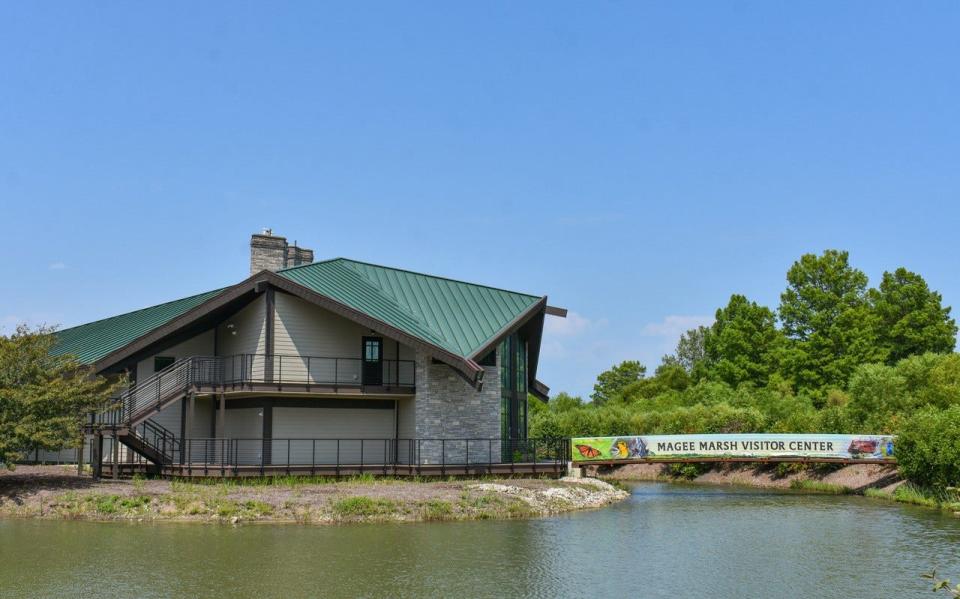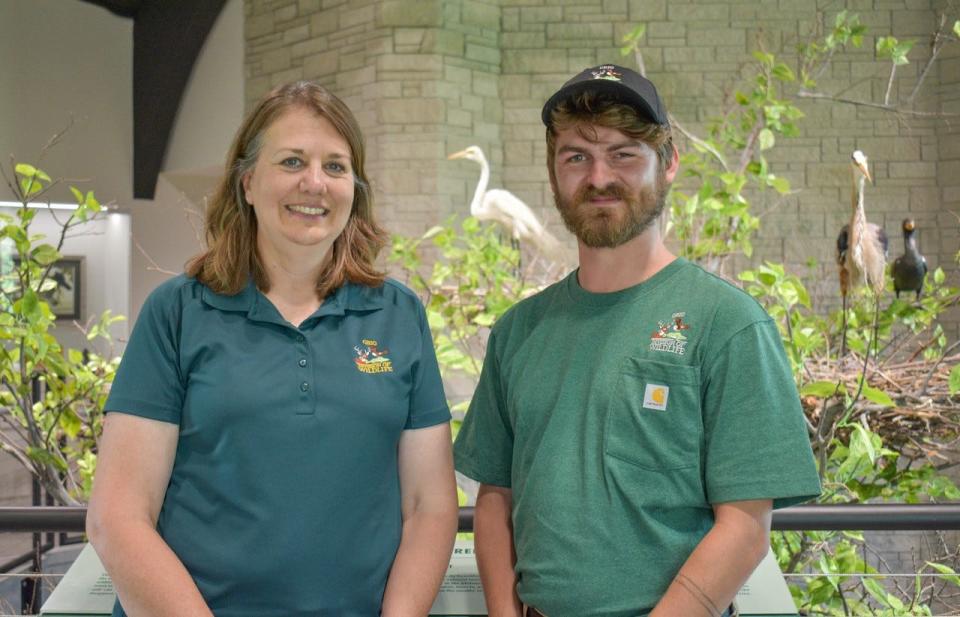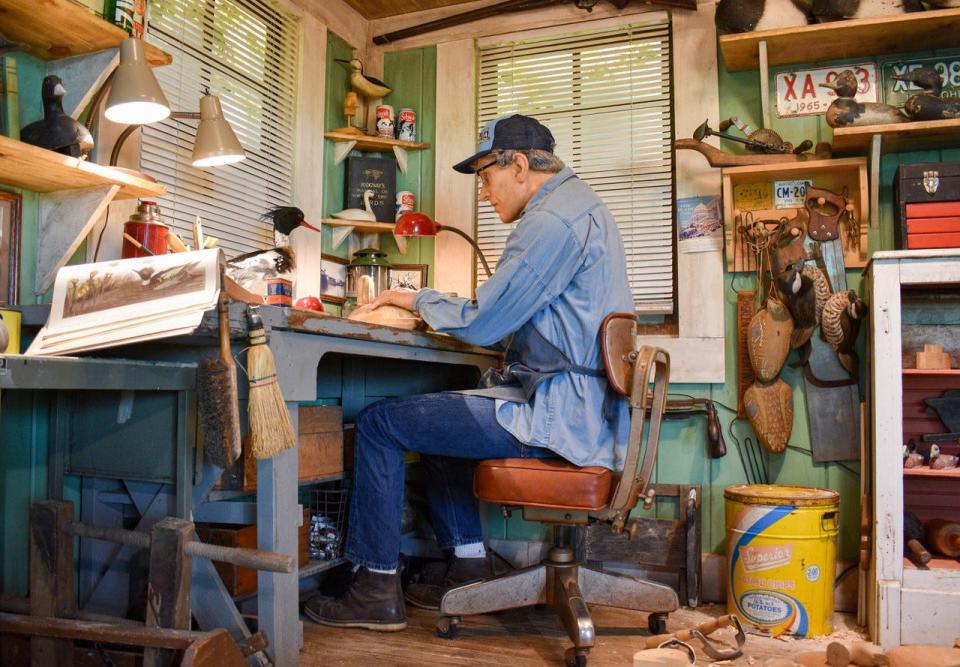Renovated Magee Marsh Visitor Center pays homage to the past while looking to the future
OAK HARBOR - This summer, thousands of birders made their first trip to the newly renovated Magee Marsh Visitor Center. As they walked through the center’s front doors, they were greeted by a life-size hackberry tree, its uppermost branches sporting a Great Blue Heron rookery that can be viewed up-close from the second floor.
“I love the tree,” said Kelly Schott, ODNR wildlife communication specialist. “When in life do you get to learn like this? Lots of people don’t realize herons nest in trees. You get to see how the birds live.”

New center offers fun and education
That first impression of the center gives visitors a glimpse of the education, inspiration and fun they are about to experience. The yearlong renovation project, which received funding from Gov. Mike DeWine's capital budget, began in May 2022, and the center was dedicated in May 2023. Within that year, a new era of Magee Marsh was born, one that pays homage to the past and looks enthusiastically to the future.
“The downstairs is about the natural history, and the upstairs is about the human history of Magee Marsh,” said Natural Resources Technician Neil Baker.
On the first floor of the center, visitors will find multiple displays depicting the native and migratory birds which pass through Magee Marsh each year. The most popular display, Baker said, is a warbler identification exhibit with life-size replicas of dozens of warblers, the small migrating songbirds that attract thousands of birders to Magee each spring.

“They did a great job of coloring the males and females and showing where you would find them on a tree,” Baker said.
Center also highlights the marsh during winter
After viewing the favorite display at Magee, visitors can turn around and learn about the sometimes forgotten part of Magee — the marsh in winter. Locals know the secret that there is still a lot of life and activity to be found at Magee in the colder months.
One of the interactive displays at the center allows visitors to push a button to hear the call and see the flight pattern of migratory birds. A lighted map displays the route birds take between their summer and winter homes. Other displays highlight the ecological history of Magee Marsh, from its early beginnings as part of the Great Black Swamp to its current status as a protected wetland.
“It’s one of the last untouched, uninterrupted wetlands,” Baker said.
On the second floor of the center, which was not accessible to the public prior to the renovation, visitors can learn about the human impact on wetland conservation, sometimes made with passionate intent and sometimes with inadvertent happenstance. When John Magee purchased 2,700 acres of marshland in 1903, he planned to convert the land to farmland. When Lake Erie fought his efforts, he allowed the land to revert back to wetland and leased the land to hunters.

Hunters aided in preservation of the marsh
That serendipitous decision began a century-long symbiotic connection between hunters and the marsh that protected the wetlands from extinction. Without the hunters of yesterday and today, there would be no Magee Marsh. The land and the wildlife that depend on it would have suffered greatly.
“There’s been a never-ending cycle between sportsmen and the land that protected the land. It’s been a great partnership,” Baker said. “That’s been the history for 100 years.”
The upstairs of the center continues its tribute to sportsman in the Gallery Room, which features hand-carved decoys from the 1870s to the present and duck stamps beginning in 1934.
Another favorite addition to the center is a permanent gift shop operated by Friends of Magee Marsh. Friends volunteer Mary Warren said the shop did record sales this spring and added eight new volunteers. The gift shop is open Fridays, Saturday and Sundays from 10 a.m. to 4 p.m.
“One of the things that was important to me was the gift shop. The Friends of Magee Marsh do a lot for us, and we wanted a room just for them,” Schott said.
Magee Marsh Wildlife Area is at 13229 W. State Route 2 in Oak Harbor. The Magee Marsh Visitor Center is open Mondays to Thursdays, 10 a.m. to 3 p.m. and Fridays to Sundays, 10 a.m. to 4 p.m. Beginning on Nov. 1, the center will be open on weekdays when staff is available or by appointment.
Contact correspondent Sheri Trusty at sheritrusty4@gmail.com.
This article originally appeared on Fremont News-Messenger: Renovated visitor center explains impact of humans, nature on marsh
